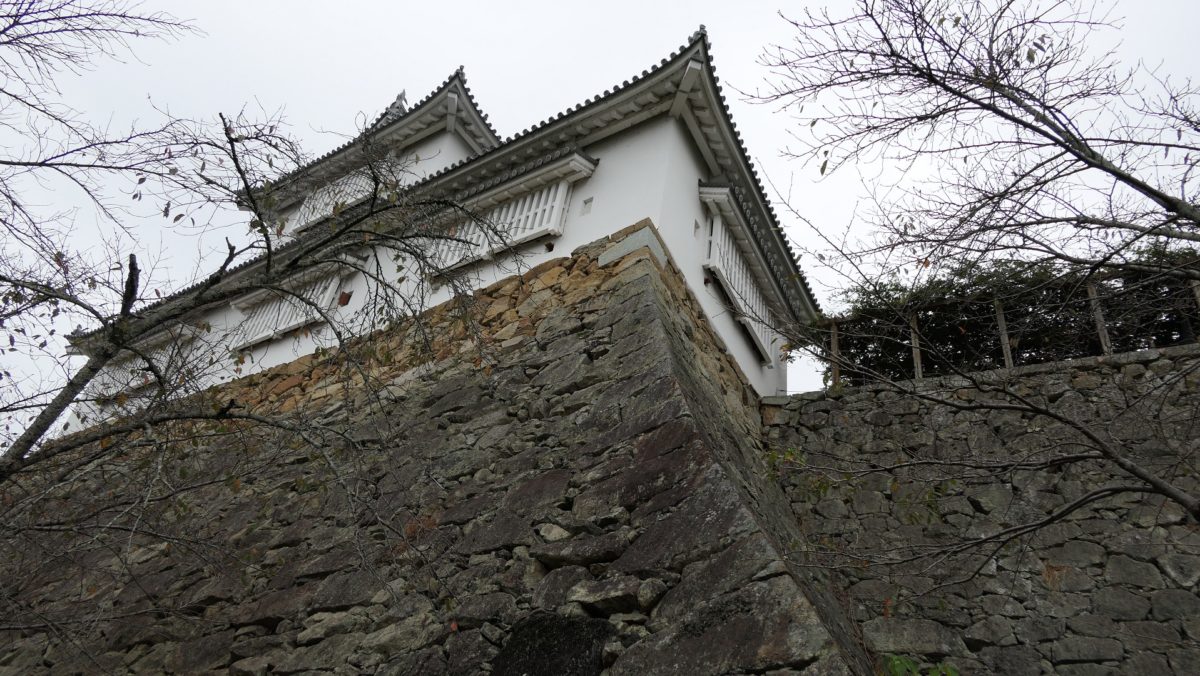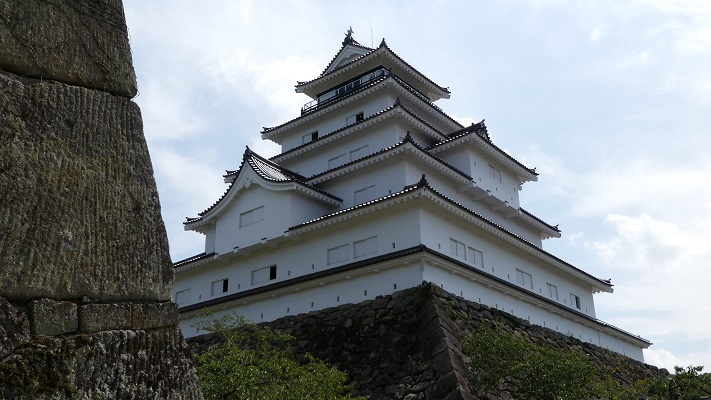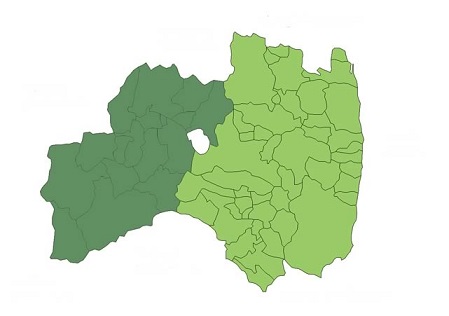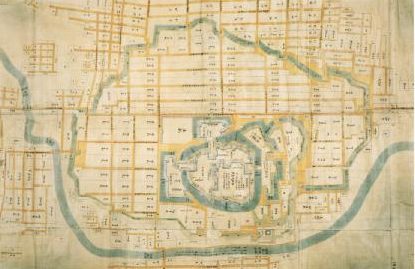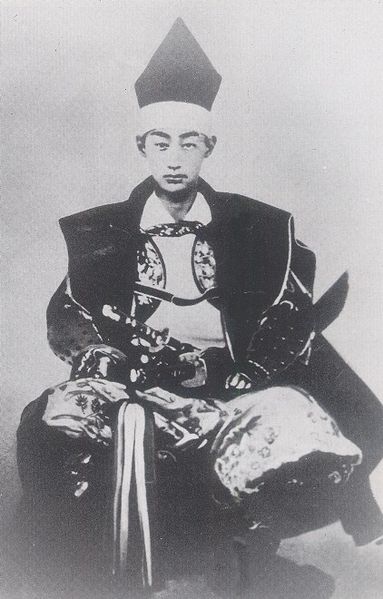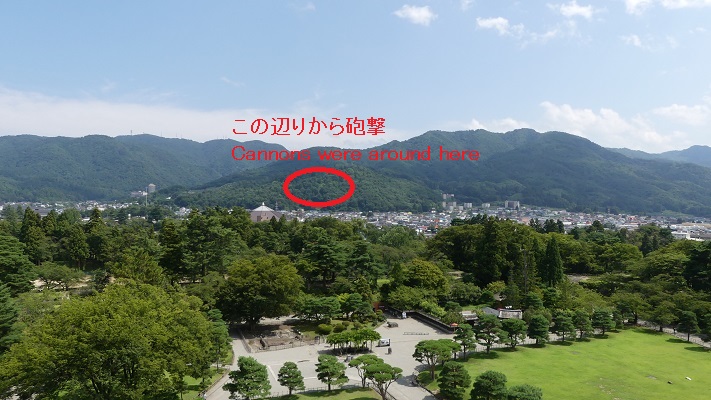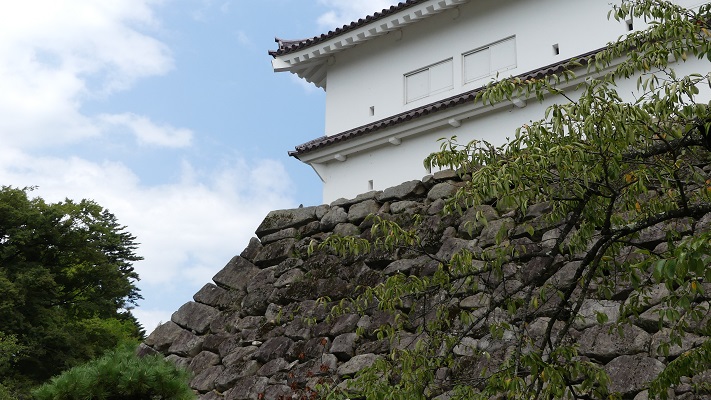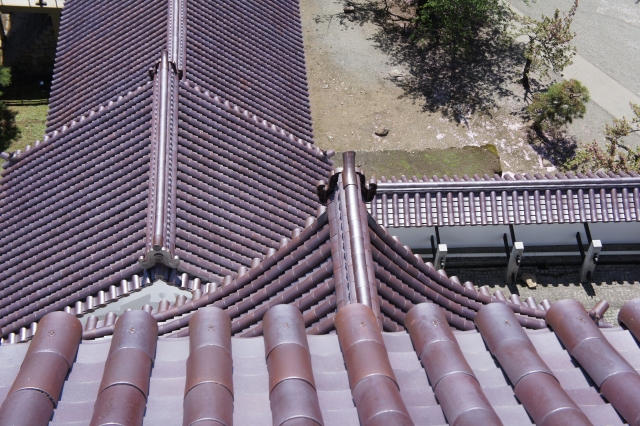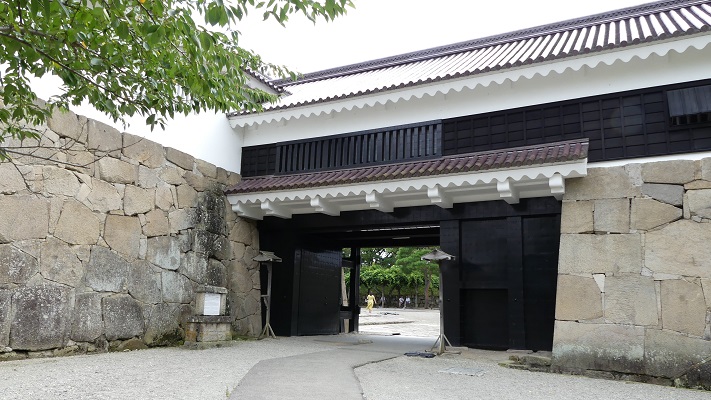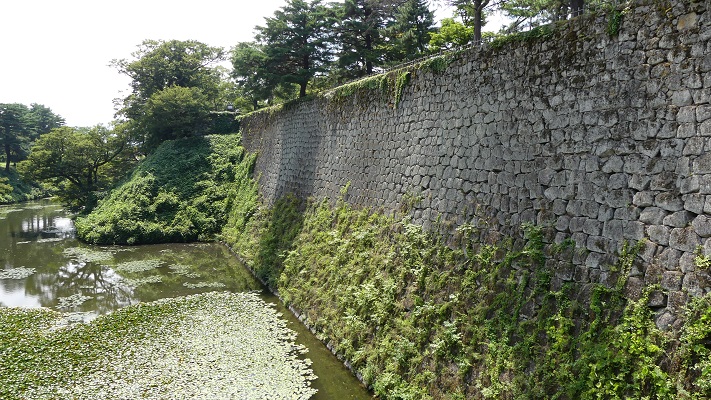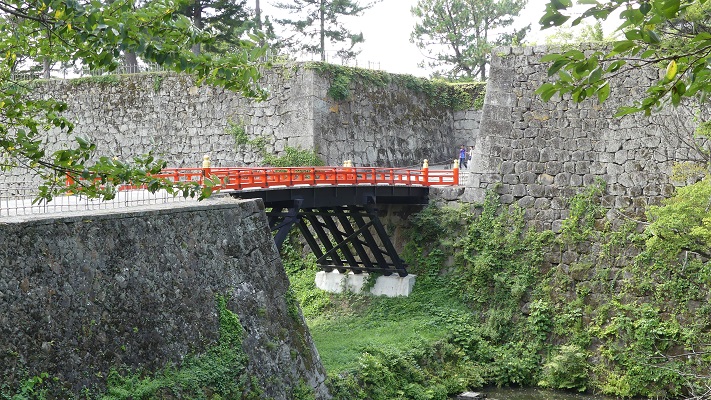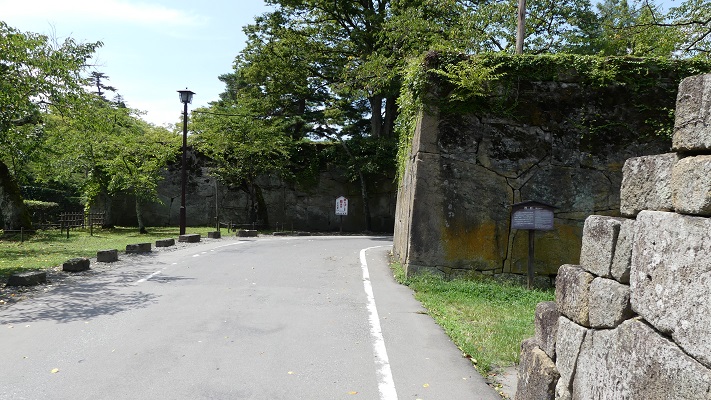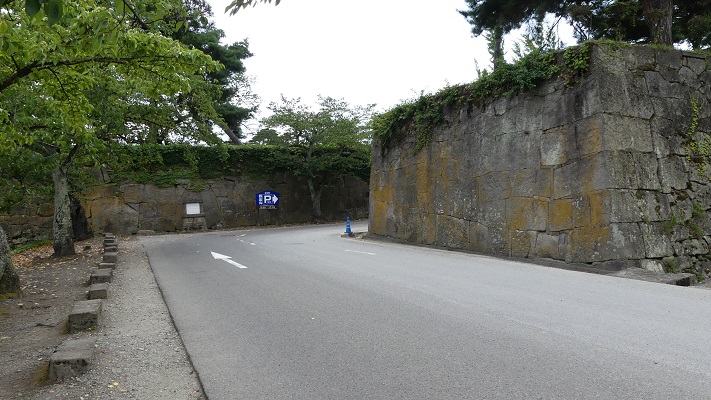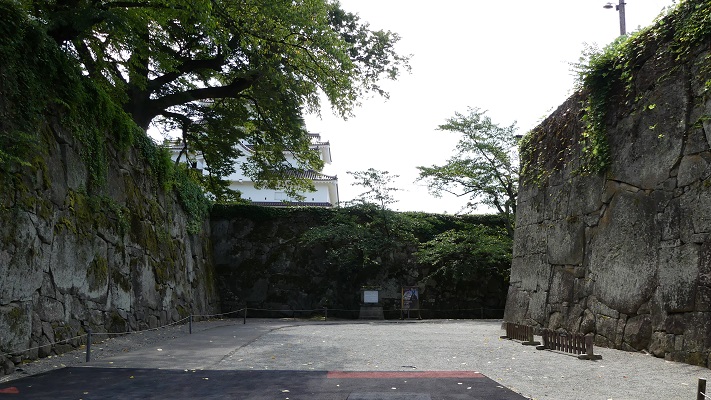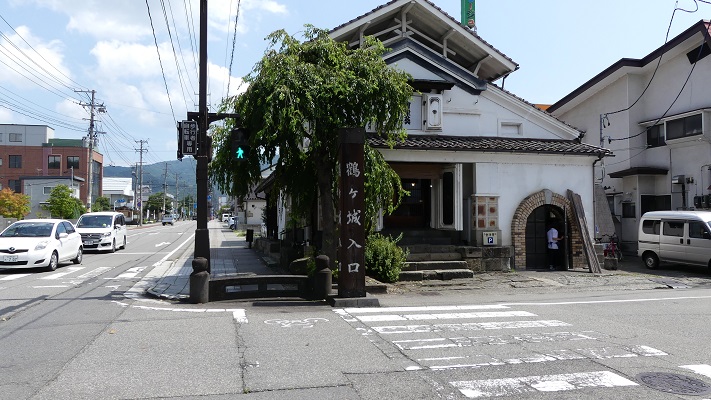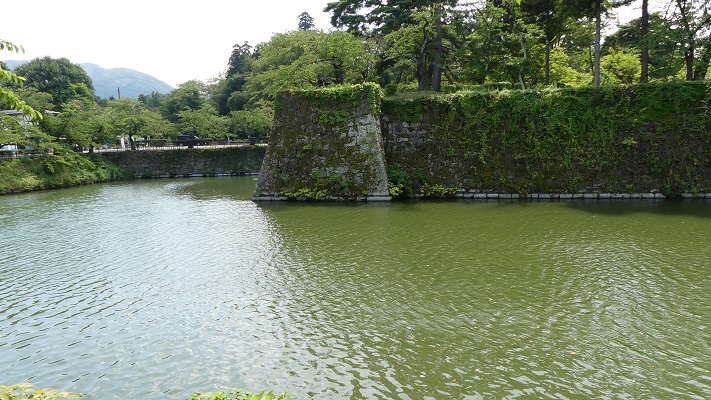立地と歴史~Location and History
森忠政が築城~Tadamada Mori built the castle
津山市は中国地方にある岡山県の北側にあります。過去において、この地域は美作国の中心地に当たりました。1603年、徳川幕府は美作国の国主として森忠政をこの地域に送り込みました。彼の領地は津山藩と呼ばれました。彼は鶴山という50mの高さの山上に、史上最強の城を築こうとしました。それが津山城だったのです。
Tsuyama City is located in the northern part of Okayama Prefecture in the Chugoku Region. In the past, the area where the city was located was the center of Mimasaka Province. In 1603, the Tokugawa Shogunate sent Tadamasa Mori to this area as the lord of the province. His territory was called the Tsuyama Feudal Domain. He tried to build the strongest castle ever on a 50m high mountain called Kakuzan. That was Ttsuyama Castle.
幕府は既に設立されていたのですが、大坂にいた豊臣氏との緊張関係が非常に高まっていました。豊臣に対抗するため、幕府の大名たちは城を作り強化することを許されたのです。津山城の建設工事は13年続きました。しかし、1616年には中断されます。豊臣氏が1615年に滅亡したからです。
Though the Shogunate was already established then, its relations with the Toyotomi clan in Osaka were very strained. It allowed its lords to build and improve their castle more against the Toyotomi. The construction of Tsuyama Castle lasted for 13 years, but it was stopped in 1616, because Toyotomi was defeated in 1615.
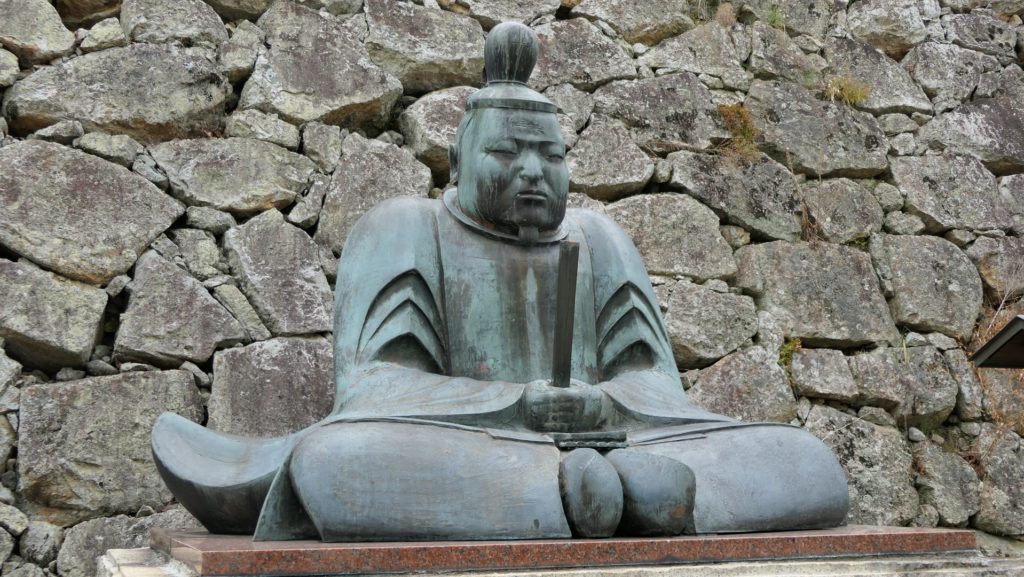
3段積み、60の櫓、5層の天守~Three tiers, Sixty turrets and Five-layer Main Tower
忠政は全山を石垣で覆い、3段積みとしそれは「一二三段」と呼ばれました。上段は「本丸」で、真ん中の段が「二の丸」、そして下段が「三の丸」でした。彼はまた、石垣の上に60もの櫓を建設し、それは日本の城の中では最多の部類に属します。それにより、津山城は難攻不落となり、敵は本丸に達するまでに櫓の下の長い道のりを門をくぐり、曲がりくねりながら進まなければなりません。
Tadamasa covered the whole mountain with stone walls like three tiers nicknamed “Hifumi-dan”. The upper tier is called the Main Enclosure or “Honmaru”, the middle one is called the Second Enclosure or “Ninomaru”, and the lower one is called the Third Enclosure or “Sannnomaru”. He also built 60 turrets on these stone walls, which was one of the largest numbers of turrets Japan’s castles had. That made Tsuyama Castle so impregnable that enemies had to go a long way through a gate, and zigzag under the turrets to reach Honmaru
更には、この城の本丸には5層の天守がありました。通常天守には、「破風」「華頭窓」といった装飾が施されますが、この城の天守は単純に四角い階層を上に向かって逓減するように積み上げただけで、屋根も最低限のものでした。これは当時としては新しい建築法で「層塔式」と呼ばれました。この方式により天守建築はより容易になり、且つ守り易いものともなったのです。
In addition, the castle had the five-layer Main Tower in Honmaru or also called “Tenshu”. Tenshu usually has decorations such as gables or “Hafu” and bell-shaped windows or “Kato-mado”. It had simply square floors diminished towards the top with minimal roofing. It was because of the new method of building Tenshu called multi-storied type or “Soto-shiki”. The method made building Tenshu more efficient and also made the castle and Tenshu easy to protect.
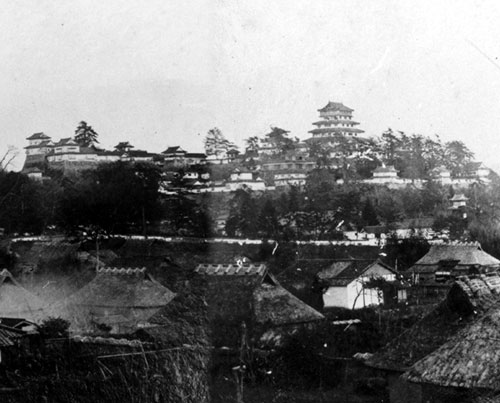
森氏は1697年に時の領主の個人的問題で改易となってしまいました。その後は松平氏が津山藩と城を幕末まで統治しました。
The Mori clan was removed from the castle in 1697 due to a lord’s personal nature. After that the Matsudaira clan governed Tsuyama Domain and the castle until the end of the Edo Period.

特徴~Features
城周辺の航空写真~The aerial photo of around the castle本丸への長い道のり~The long way to Honmaru
現在、津山城跡は、桜で有名な鶴山公園になっています。観光客は通常、南側の入口から公園に入り、石造りの階段を上がっていきます。右の方に曲がると、冠木門跡があります。ここは三の丸の入口であり、第一段目に当たります。実はこの門には過去においても建物はありませんでした。1616年に工事が中止となった後、ここに建物を作ることが許されなかったからです。
Now, the ruins of Tsuyama Castle is used as Kakuzan Park which is also known for cherry blossoms. Visitors usually enter the park from the entrance in the south going up stone stairs. Turning to the right, there are the ruins of Kabuki-mon Gate, the entrance of Sannnomaru, and the first tier. In fact, the gate had no buildings even in the past, as making them were not allowed after the construction stopped in 1616.
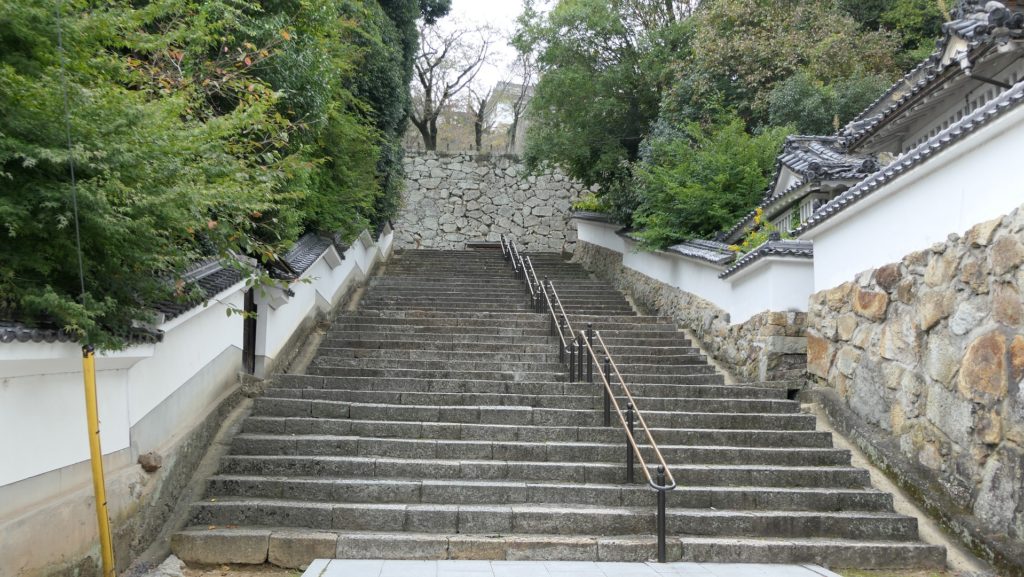
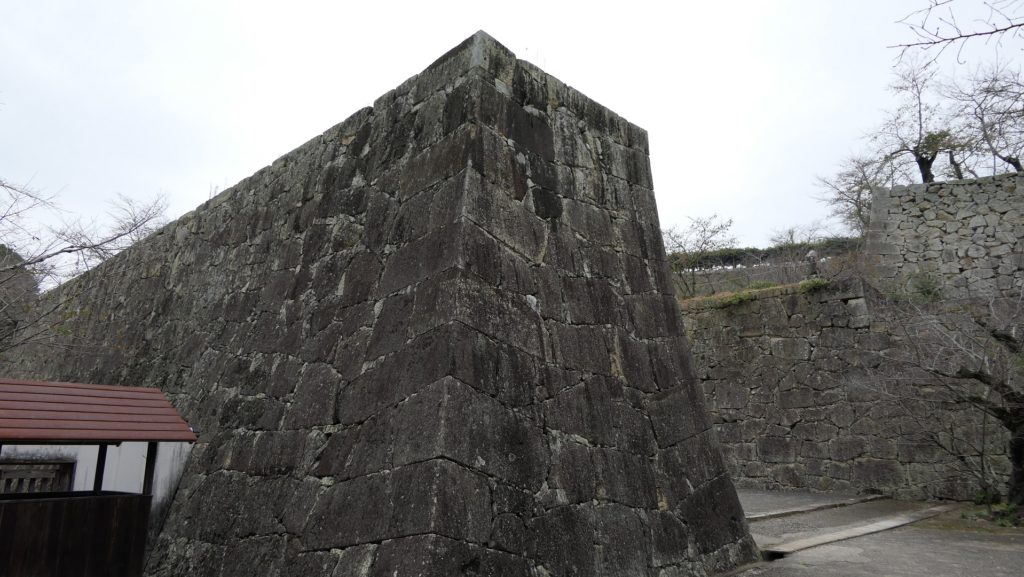
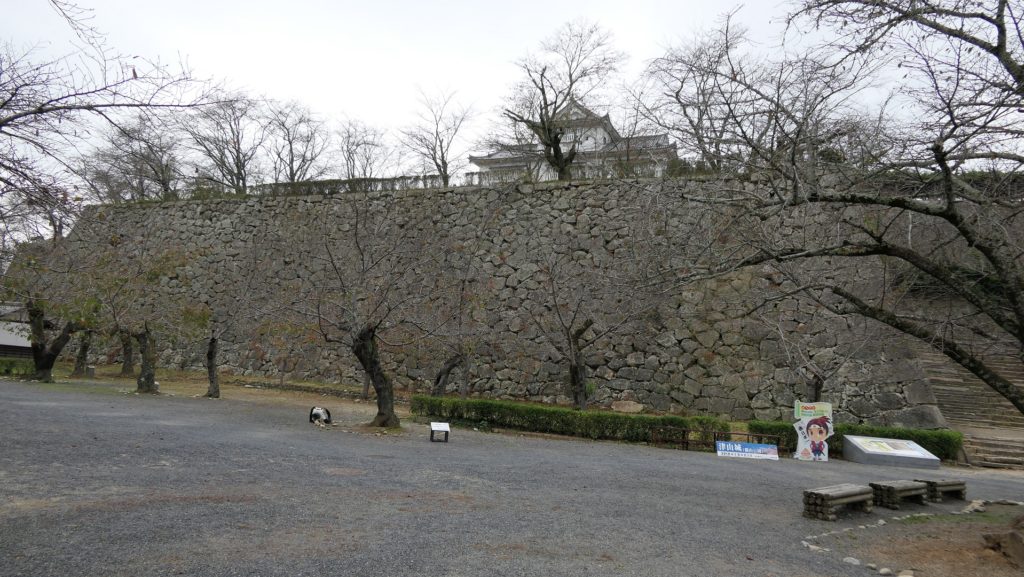
次には、二の丸の入口、第二段目に当たる表中門跡へと上っていきます。ここには大きな門の建物がありました。この曲輪に入るには180度曲がって進む必要あります。続く四足門跡は反対向きになっているからです。このように、敵は容易には城に攻め込めないようになっていました。
Next, you can go up to the ruins of Omotenaka-mon Gate, the entrance of Ninomaru, the second tier. There was a huge gate building. You have to turn 180 degrees to enter the enclosure, because the following gate ruins Shisoku-mon are set reversed. That way, enemies were not able to attack the castle easily.


本丸に達するには、二の丸の狭い敷地を通っていかなければなりません。ここから本丸にある美しく復元された備中櫓を仰ぎ見ることができますが、過去には敵にとって大変な脅威だったことでしょう。
To reach Honmaru, you have to go through a narrow area in Ninomaru. You can look up at the beautiful restored Bicchu Turret of Honmaru. Although it is beautiful, it should have been a threat to enemies in the past.
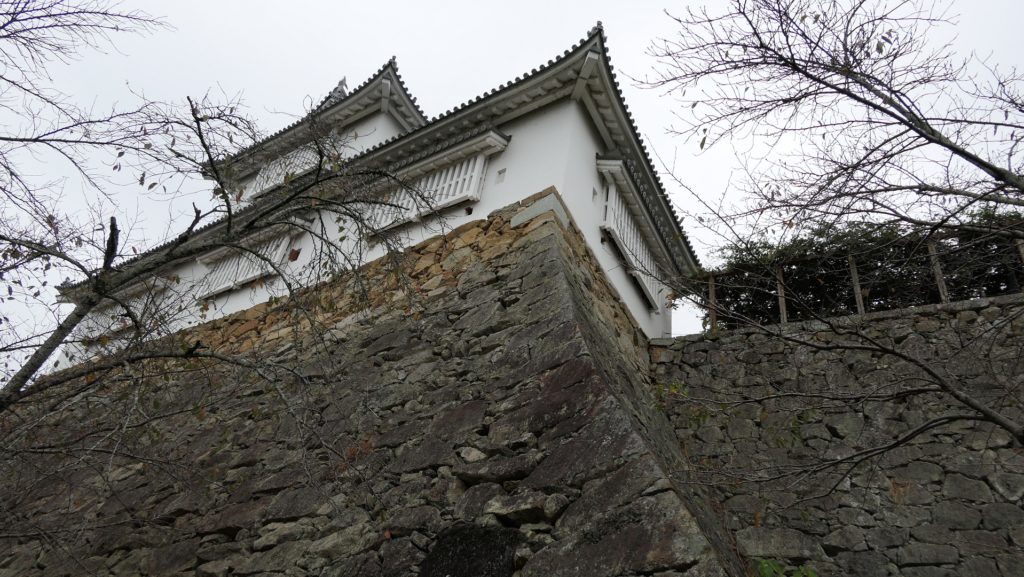
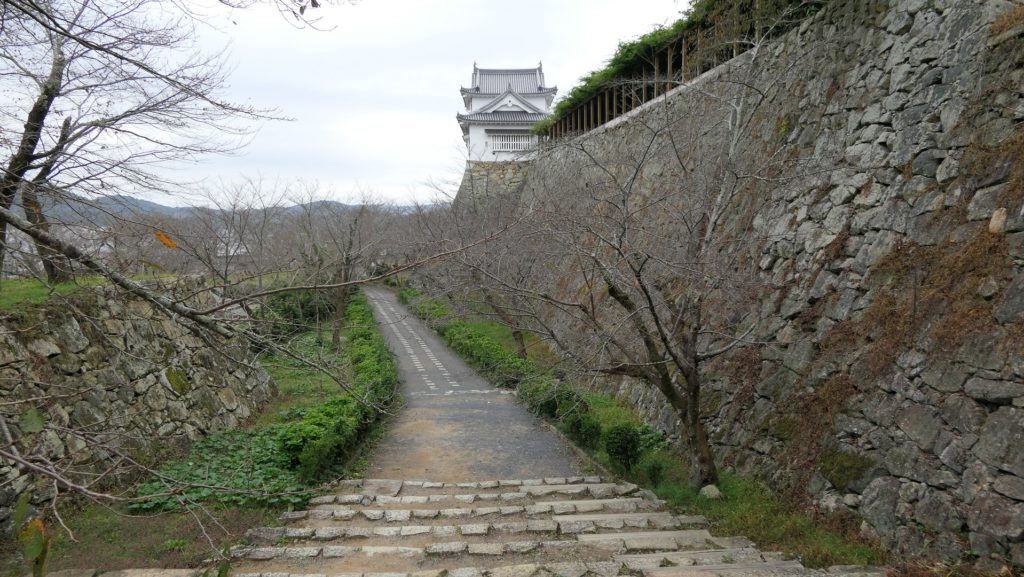
本丸には二の丸のように二つの門と曲がりくねった通路がありましたが、更に強力なものでした。その切手門と表鉄門跡を見ることができます。
Honmaru also had two gates and a zigzagged route like Ninomaru, but could be more defensive. You can also see the ruins of the gates, Kitte-mon and Omote-Kurogane-mon.

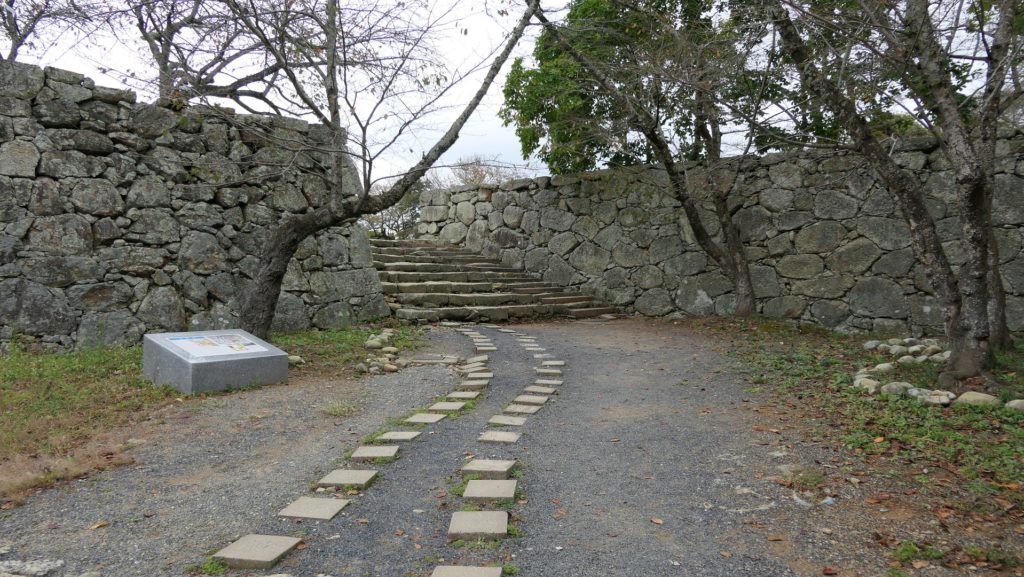
本丸の見どころ~The highlights of Honmaru
三段目の本丸は広大です。過去には御殿がひしめいていましたが、今は広場になっています。60あった櫓のうち、備中櫓だけが元通りに復元され、一般に公開されています。その内部は意外にも住みやすい感じで、領主か高貴な女性が住んでいたからだろうとのことです。この櫓は、他の櫓とは随分と違っていたようで、だからこそ最初に復元されたのです。
Honmaru, the third tier is spacey. It was packed with a lot of halls, and is an open space now. Only Bicchu Turret out of the 60 turrets has been restored to its original state and is now open to the public. The interior is unexpectedly livable because the lord himself or notable women might have used it. Such a turret was very different from other turrets. That’s why the turret was first restored.
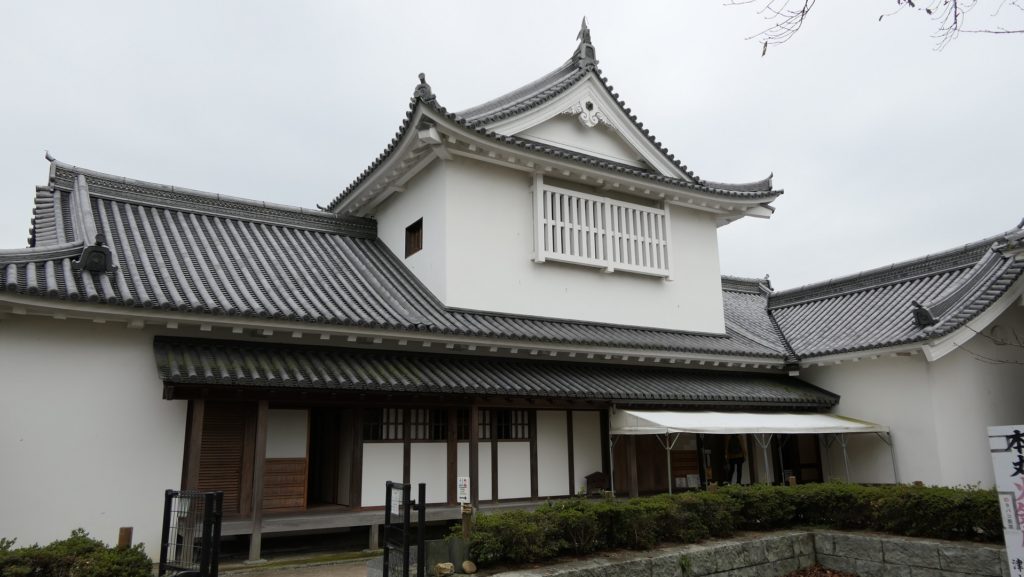

天守については、石垣の天守台が残っています。天守台の天辺からの景色は素晴らしく、最近では石垣の中のハート型の石が有名になっています。
As for the Tenshu, the base stone walls for it still remain. Views from the top of the base are very good, and a heart shaped stone among the stone walls has become popular recently.

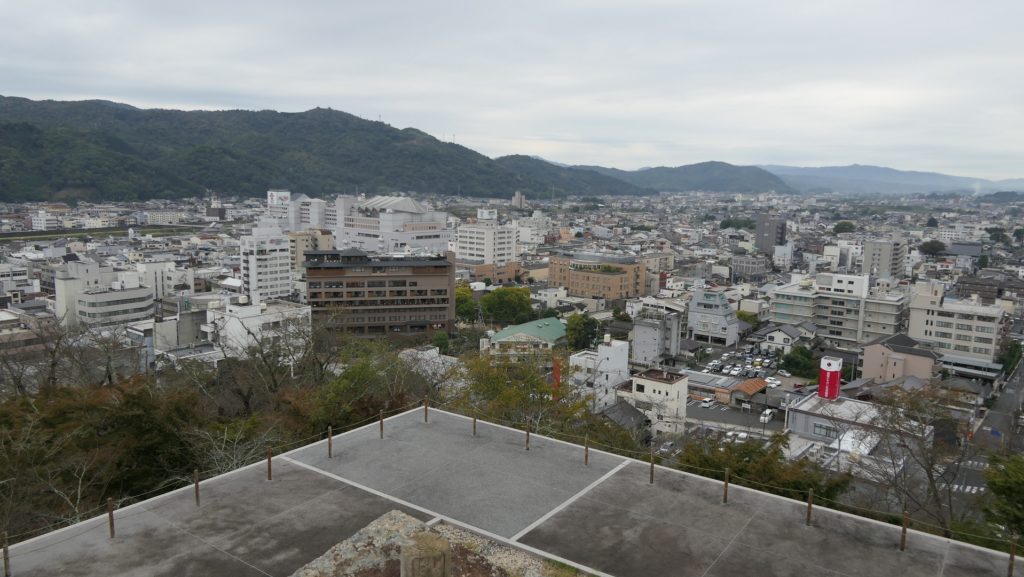

本丸の背後もまた石垣になっていて、粟積櫓跡などがあります。山の裏側には自然の地形も残っているように見えます。
The back of Honmaru also has stone walls for turret ruins like Awazumi Turret. It looks like natural terrain remains in the back of the mountain.

その後~Later History
明治維新後、津山城は廃城となり、城の全ての建物は撤去されました。四足門の建物だけが神社に移築され現存しています。その後しばらくして残っていた石垣が崩落し始めました。そこで、津山町は城跡を1900年に所有し、鶴山公園とし、そこに桜を植えたのです。城跡は1963年に国の史跡に指定されました。2005年、備中櫓の建物が元通りに復元されました。
After the Meiji Restoration, Tsuyama Castle was abandoned and all of its buildings were demolished. Only the building of Shisoku-mon Gate was moved to a shrine and remains there to this day. After a while, the remaining stone walls started to collapse, so Tsuyama Town who owned the ruins in 1900 as Kakuzan Park, planted cherry blossoms there. The ruins were designated as a National Historic Site in 1963. In 2005, the building of Bicchu Turret was restored in its original form.
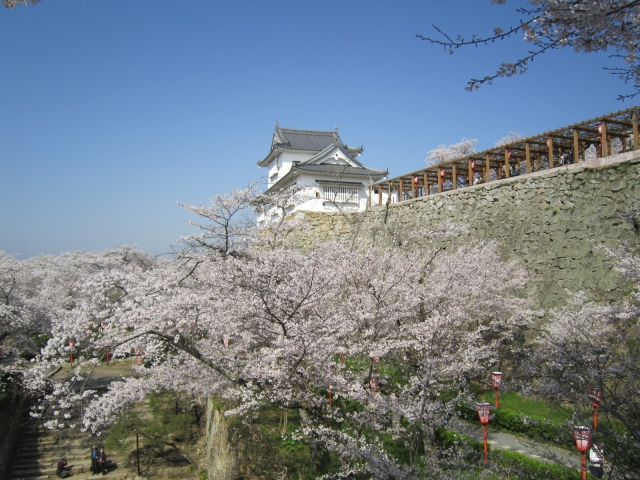
私の感想~My Impression
このような堅牢な石垣がよい状態で残っていることに驚きました。しかしそれは津山市が石垣を維持するために大変な努力を払っているからなのです。歴史家は、桜の木も石垣を痛めていると言い、いくらかは伐採すべきだと指摘しています。桜の花は観光客にはとても有名であり、解決するには大変悩ましい問題であります。いつかこの問題が解決され、城跡がより良く整備されるよう望みます。
I was so surprised to see that such tough stone walls remain so well. That’s because Tsuyama City has been putting great resources into maintaining the stone walls. Historians point out that the cherry trees also damage them, so some of the trees should be removed. It is too controversial to solve because of their blossoms being very popular for tourists. I hope these issues will be fixed and the ruins will be developed more.

ここに行くには~How to get There
車で行く場合:中国自動車道の津山ICまたは院庄ICから約15分かかります。公園に駐車場があります。
電車で行く場合:JR津山駅から歩いて約10分です。
東京、名古屋または大阪から津山駅まで:新幹線で岡山駅まで行き、津山線に乗り換えてください。
If you want to go there by car: It takes about 15 minutes from the Tsuyama IC or the Innosho IC on Chogoku Expressway. The park offers a parking lot.
If you want to go there by train: It takes about 10 minutes on foot from JR Tsuyama Station.
From Tokyo, Nagoya, or Osaka to Tsuyama Station: Take the Shinkansen super express and transfer to Tsuyama local line at Okayama Station.
リンク、参考情報~Links and References
・津山城について(津山市公式サイト)~Sightseeing in Tsuyama(Tsuyama City Official Website)
・「石垣の名城完全ガイド/千田嘉博著」講談社(Japanese Book)
・「よみがえる日本の城5」学研(Japanese Book)

